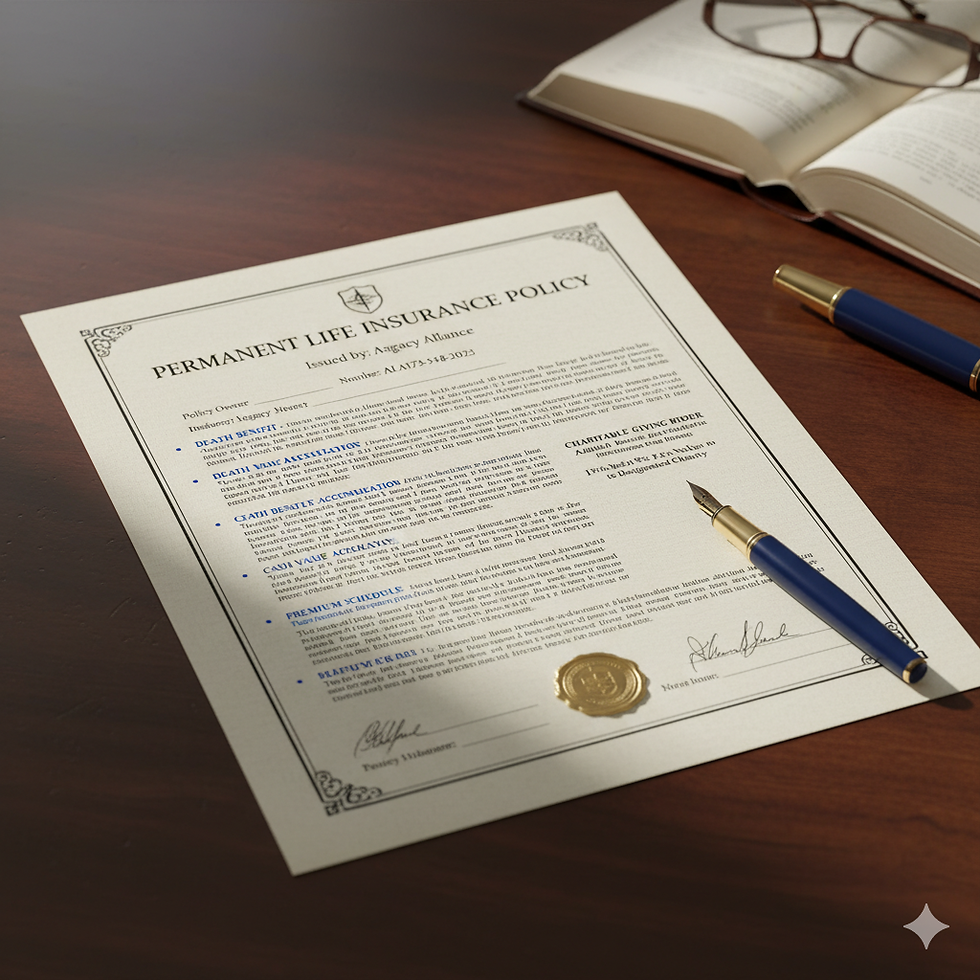Alternative Assets & Charitable Good
- Laura Malone
- Oct 2
- 3 min read
Many donors and charities are very familiar with the concept of checkbook charity. It is easily the most convenient route to give and to get. However, for a donor, is it the best way to give?
Many donors may not realize the variety of gifting options that can be made to charity. Unfortunately, some nonprofit organizations may not have the expertise to be able to receive gifts that are alternative (or complex) assets. That is why a charitable vehicle such as a donor advised fund (DAF) becomes an ideal tool for both the donor and the charity.

What are Alternative Assets?
For clarity, alternative assets are defined as the following:
Is not a conventional asset such as publicly traded company stock, or shares of mutual funds and ETFs
Are not usually regulated by the SEC
Tend to be illiquid
Private equity, hedge funds, venture capital, commodities, derivatives contracts, real estate, LLCs, limited partnerships, and life insurance policies are common examples of alternative investments.
Let’s look at some of these alternative asset types:
Closely held Stock: By definition, closely held stocks are shares of a corporation where a small number of investors possess most of the shares. S-corps, private C-corps, and LLCs are examples of such business ownership types. In a typical scenario, it is often a business owner looking to retire from their business that has much of their net worth tied up in closely held stock. The DAF, with select third parties, becomes an effective transitional tool allowing the business owner to sell these closely held shares but do it in a way that is tax-smart.
Life Insurance: Life insurance policies are one of the more unusual alternative investments for the fact that many donors and charities would not normally regard a life insurance policy as an option to fund charitable giving. However, life insurance provides a surprising array of innovation in being a funding source for DAFs.
Real Estate: Real estate is an interesting paradox; it represents nearly 43% of America’s total wealth, but only 3% of its charitable giving. Why? Knowledge … most charitably-minded persons ( and the advisors who serve them) are simply not aware of real estate as a powerful source of charitable giving. Donating real estate ( or the ownership interests of real estate) into a DAF turns this sizable source of wealth into a powerful channel for charitable good.
Gold & other mineral rights and royalties: It is not uncommon for those with ownership of gold to use such an asset for charitable gifting. Additionally, mineral rights and mineral royalties also can be used as an asset class for charitable good.
Agriculture: One of the most innovative ways that donors are able to put assets to use for charitable giving is through the means of donating agricultural commodities, such as gifts of grain. Although the circumstances may clearly be limited to farmers, ranchers and others involved in agriculture, the process underscores the innovative strength of a DAF in turning an alternative asset into charitable good.
Cryptocurrency: With the growth in value and interest, cryptocurrencies such as bitcoin have grown as an acceptable source of charitable grant making. Donation volume directly correlates with market performance. When crypto values soar, the tax advantages of donating appreciated crypto grow as well, leading to more giving.
Conclusion
Although alternative assets are varied, there is one thing they have in common: their complexity does not make them the easiest assets to understand and how to donate them well demands a level of expertise for the process to occur smoothly. At Generosity Nexus, we have nearly 15 years of helping donors remove the complexity of complex assets. We help pave the path to better giving.
Don’t hesitate to schedule an appointment to learn more about how we can help you.




Comments